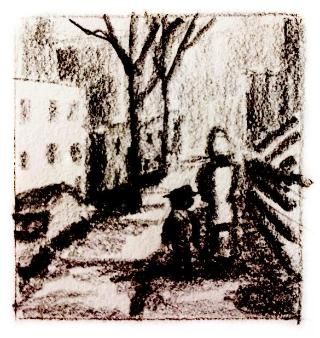For Asher’s mother, Rivkeh Lev, art should elicit pleasure in the viewer. When Asher begins to demonstrate his artistic interest and ability, she initially encourages him. But after he draws an unflattering picture of her – she is a common subject of his work – she asks why he didn’t draw pretty pictures of birds and flowers instead. His artistic purpose, as she sees it, is to reflect and add to the beauty of the world by making pleasing images. Even at a young age, Asher finds this view unacceptable. After he draws a picture of his father talking angrily on the telephone, his mother asks about the work:
“Was it a pretty drawing, Asher?”
“No, Mama. But it was a good drawing.”…
“You should make the world pretty, Asher,” my mother whispered, leaning toward me…
“I don’t like the world, Mama. It’s not pretty. I won’t draw it pretty.” (28)
Several philosophers have suggested that art is that which pleases or is seen as beautiful. For example, in his famous 1757 essay, “Of the Standard of Taste,” Scottish philosopher David Hume (1711-1776) contended that art is primarily intended to please: “The object of eloquence is to persuade, of history to instruct, of poetry to please by means of the passions and the imagination.”[1] Of course, this raises the question of how we might agree upon what qualifies as art in light of our different, subjective responses to what we consider beautiful or pleasing. Although Hume acknowledged that personal tastes vary, he still argued for a universal standard for what counts as beautiful or pleasing – a standard that he thought should be informed by both expertise and freeing oneself from prejudice.
Understandably, some have pointed to the limitations of depending too much upon our subjective responses or appealing to pleasure. Anglican theologian and musician Jeremy Begbie notes that an appeal to beauty can easily lead to an affirmation of sentimentality, which he argues often trivializes evil, is self-indulgent, and avoids costly action.[2] For Asher, who believes that his drawings are “good,” even if they aren’t “pretty,” the notion that art is meant to please is an oversimplification.

